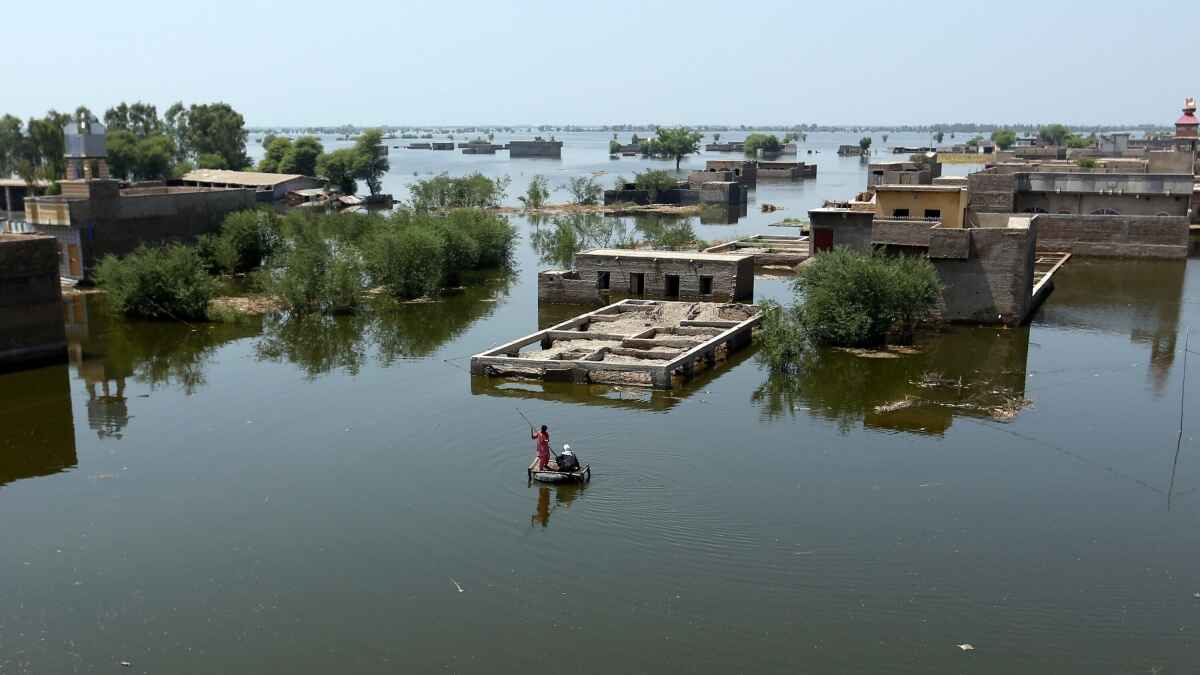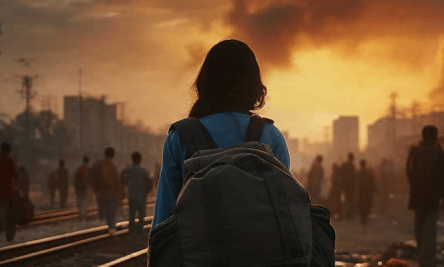Learning in a Time of Chaos
Pakistan has suffered twin tragedies these past two years. First, it was a pandemic that brought
January 25, 2023
Learning in a Time of Chaos
The State of Education in the Aftermath of COVID-19 & Flooding
By Sabeen Rizvi
Pakistan has suffered twin tragedies these past two years. First, it was a pandemic that brought the global economy to a standstill. Though Pakistan was lauded for its efforts in curbing the pandemic within its borders, it was no exception to its economic impacts. After the global pandemic had somewhat subsided, there was a more localized tragedy, in the form of historic flooding. Both have had a host of devastating impacts, which will ripple out into the future, mostly due to a lack of long-term planning and support. The areas where most Pakistanis will suffer range from job opportunities to healthcare to education. Among these, one will have a unique impact on the youngest populations of Pakistan: education. Over 3.5 million children have had their education interrupted due to the effects of the flood. Though the reasons are myriad, there are three key reasons that education will suffer among families affected by the flooding.

Infrastructure
Though COVID-19 shuttered schools, the buildings were mostly maintained so that children could return to them after the lockdowns were lifted. In the case of flooding, the infrastructure was devastated, leaving many children without a school to go to at all. Just from preliminary estimates, it was found that at least 25,993 schools were affected in Sindh, Balochistan, Punjab and KP. Not only this, the furniture and learning materials in these schools were also destroyed, which adds to the already high costs incurred by the destruction. Since many people lost their homes and any chance of shelter, many schools (7,062 so far) were converted into relief camps where affected populations could seek shelter and food could be distributed. This will lead to renovations being required down the line, as well as children not being able to use these buildings for learning, which will add to the costs and time required to get students back on track. Children who were already refugees have been even more greatly affected, given that this is another displacement. Reportedly, 27,148 refugee children have been affected, of which 58.7% are girls, implying that financial status and gender have added effects on the people who suffer. Destruction of infrastructure is widening the gap to educational attainment to a wide chasm. This will come as a surprise to no one, since infrastructure is a large and difficult undertaking, with the highest quality materials and methods only available to the rich and already well-situated. With the lack of appropriate infrastructure in these areas, whatever was present being washed away by the floods has dealt a significant blow to the people, particularly to students, teachers and education-providers, who cannot build even temporary, makeshift schools without significant investment and support.
26,632
Schools destroyed/damaged
1,900,000
Households are at risk of poverty
64
Weeks that Schools were closed
Poverty
For most people reading this, education is a given, a minimum expectation for reaching adulthood. For many around the world, particularly those living in poverty, education is a luxury that is difficult to obtain, even when there are low cost or free-of-cost public options available. For those families which were struggling to send their children to school before the floods, the devastation proved the final blow to their ability to afford an education. In a World Bank survey after the flooding, it was revealed that of those who were unlikely to send their children back to school, 63 percent reported that it was purely due to the costs associated with schooling. It’s clear that people who were already struggling are now in dire enough straits that survival has become their only priority. Between thinking about future prosperity and staying alive long enough to have a future, the choice is quite clear.
Policy
Most policy, in the same vein, is dealing with immediate problems: food, shelter, water, sanitation, medicine and other survival-based resources. This is understandable, but should be addressed by providing more help rather than accepting the lowered priority of education. For instance, in some areas, Temporary Learning Centers have been set up where children can go to continue their education to an extent. There have also been attempts to salvage schools that have been adversely affected by the flooding, through various interventions aimed at sanitation and water removal. However, without adequate funding, this can’t be done to the level required. Despite the estimated USD 10.2 million, only USD 5 million has been pledged by the ECW, the UN fund for global education. There are no large-scale policies being rolled out, nor any awareness raised in this regard. In a time of such devastation, the more complex needs of humanity are being largely forgotten or ignored.
The Greatest Cost of the Climate Crisis
Though the flooding, largely caused by the climate crisis, has brought with it a great deal of suffering and loss, the worst losses will be in the long term. Given the pace of human growth and societal change, it is clear that the loss of education will cause a great deal of damage as time goes on. It will do so by impoverishing the human mind, depriving people of the learning and growth it takes to become a fully involved member of society. Without informed and skilled citizens, Pakistan will suffer great losses, that will only compound over time. This is not only a question of our children, but a question of Pakistan’s continued prosperity and success. If the state of education is not brought to a higher standard, we will continue the downward trend that our economy and various systems are currently facing. Instead, we can use the lessons from this disaster to build an even stronger and thriving Pakistan for all its citizens, no matter their age or income.
Sources:
https://documents1.worldbank.org/curated/en/099523112072218789/pdf/IDU09bc63666052fe041af08d8d0cbd7862b0c65.pdf
https://reliefweb.int/report/pakistan/pakistan-floods-education-snapshot-30-september-2022
Click to share
Recent Blogs
July 14, 2023
April 18, 2023
April 18, 2023




